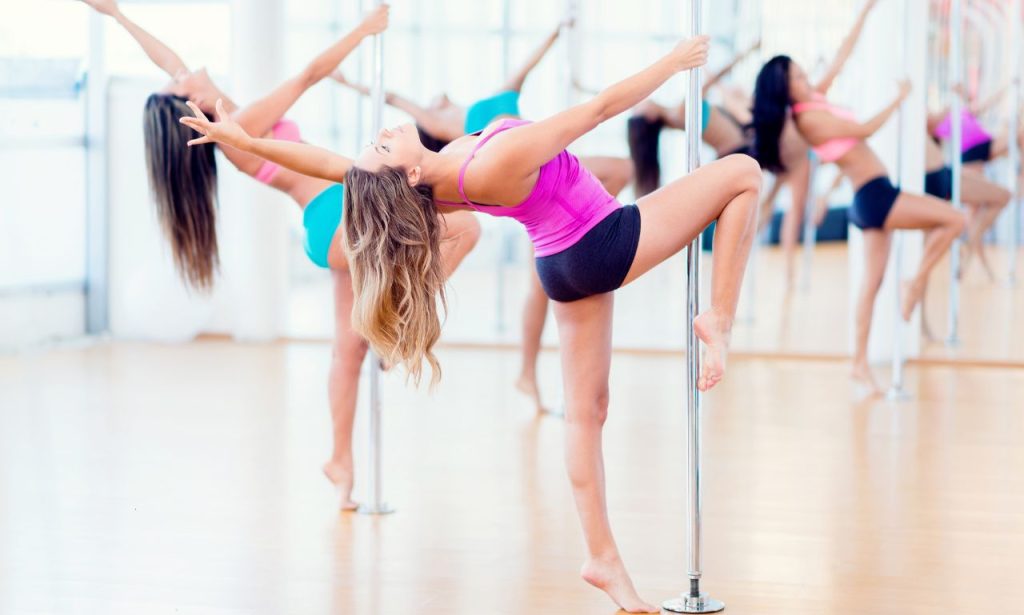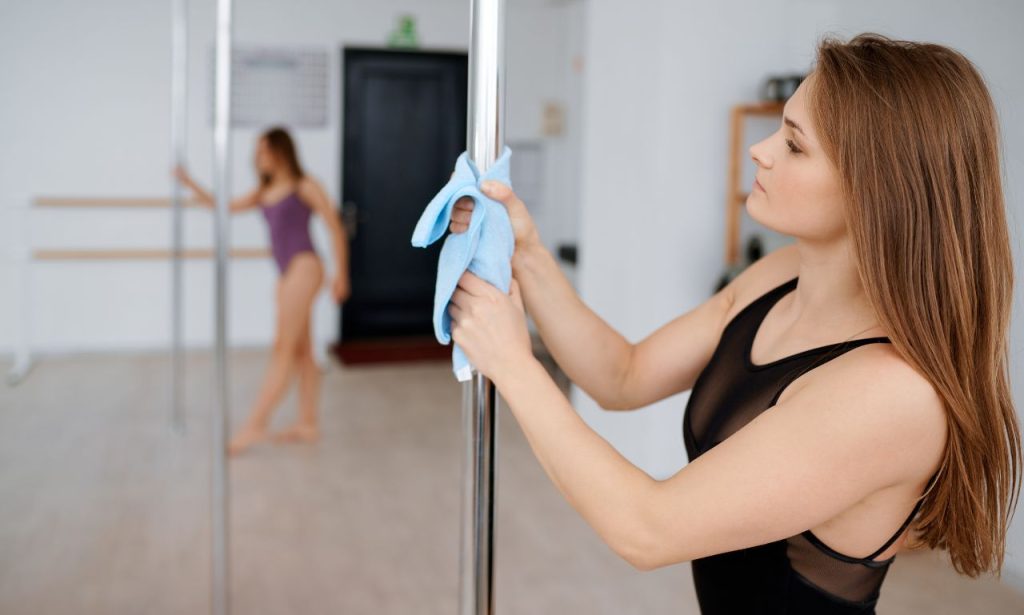Stepping into your first pole dancing class is a thrilling experience. It’s a world where strength meets sensuality, where fitness intertwines with artistry, and where you discover a newfound confidence you never knew you possessed. But amidst the excitement of this empowering journey, a common question arises: what to wear for pole dancing class?
While the answer might seem simple at first glance – comfortable clothing that allows for movement – there’s a nuanced art to selecting the perfect attire that optimizes your performance, enhances your confidence, and keeps you safe. This isn’t just about looking the part; it’s about feeling the part, embracing the experience fully, and allowing your inner goddess to shine.
Understanding Why the Right Attire Matters
Before we dive into the specifics of what to wear for pole dancing class, it’s essential to understand why this choice is so crucial. Unlike other fitness classes where loose-fitting tees and baggy sweatpants reign supreme, pole dancing demands a different approach. Here’s why:
- Grip is King: Pole dancing relies heavily on skin contact for grip. Exposed skin on your legs, arms, and even your abdomen helps you stick to the pole, enabling you to execute moves safely and effectively.
- Freedom to Move: From graceful spins to powerful inversions, pole dancing requires a full range of motion. Your clothing should never restrict your movements or hinder your ability to flow seamlessly from one pose to another.
- Confidence Booster: There’s an undeniable confidence that comes from feeling comfortable and looking your best. The right attire can empower you to embrace your sensuality, push your boundaries, and truly own your space on the pole.
Choosing Clothing that Moves with You

When deciding what to wear for pole dancing class, comfort and flexibility should be your top priorities. Remember, you’ll be engaging in a physically demanding activity that involves stretching, spinning, and holding poses.
Embrace the Power of Breathable Fabrics:
Opt for clothing made from breathable, moisture-wicking fabrics like:
- Cotton: A natural fiber known for its breathability and softness, making it comfortable for direct skin contact.
- Spandex/Lycra: These fabrics offer excellent stretch and recovery, ensuring a snug fit that moves with your body.
- Nylon: A durable and lightweight fabric that wicks away moisture effectively, keeping you dry and comfortable during intense workouts.
- Moisture-Wicking Blends: Many activewear brands offer blends specifically designed to wick away sweat and keep you feeling fresh.
The Fitted Approach
While loose-fitting clothing might seem tempting for comfort, it can actually hinder your progress and even pose safety hazards during pole dancing. Here’s why a fitted approach is essential:
- Enhanced Grip: Loose fabric can bunch up and create a barrier between your skin and the pole, reducing friction and making it difficult to maintain your hold.
- Unrestricted Movement: Baggy clothing can restrict your range of motion, making it challenging to execute moves properly and potentially leading to injuries.
- Clear Visual Feedback: Fitted clothing allows you and your instructor to see your body lines clearly, enabling better feedback on your form and technique.
Understanding the Importance of Skin Exposure
One of the most significant differences between pole dancing attire and regular workout clothes is the emphasis on skin exposure. While it might feel intimidating at first, remember that it’s not about showing off your body; it’s about maximizing your grip and safety on the pole.
Why Skin Contact Matters
- Increased Friction: Your skin naturally creates more friction against the pole compared to fabric, providing a secure grip that allows you to execute moves with confidence.
- Better Control: With increased grip comes better control over your movements, enabling you to hold poses longer and transition smoothly between spins.
- Enhanced Safety: A secure grip is crucial for preventing slips and falls, especially as you progress to more advanced moves.
Finding the Right Balance
The amount of skin you choose to expose is entirely up to you and your comfort level. Start with what feels manageable and gradually increase exposure as you gain confidence. Remember, there’s no right or wrong answer; it’s about finding what works best for you.
What to Avoid Wearing
While comfort and flexibility are key, it’s equally important to avoid certain clothing items and accessories that can hinder your performance and even pose safety risks during your pole dancing class.
Steer Clear of Streetwear
Leave your everyday clothes at the door and opt for dedicated workout attire. Here’s why:
- Durability: Streetwear isn’t designed for the rigors of pole dancing and can easily tear or rip during intense movements.
- Hygiene: Wearing clean workout clothes helps maintain a hygienic environment for yourself and others in the studio.
- Distractions: Loose threads, embellishments, or dangling accessories on streetwear can easily get caught on the pole, posing a safety hazard.
Accessories to Avoid
While jewelry can complement your style, it’s best to avoid wearing it during your pole dancing class. Here’s why:
- Scratches: Rings, bracelets, and watches can scratch the pole’s surface, damaging the equipment and potentially causing injuries.
- Snags and Tears: Dangling earrings or necklaces can get caught on the pole or your clothing, leading to distractions, discomfort, or even injuries.
The Essentials
Now that you understand the importance of choosing the right attire and what to avoid, let’s delve into the essential pieces that will form the foundation of your pole dancing wardrobe.
1. Pole Dance Shorts
Pole dance shorts are specifically designed to provide maximum freedom of movement while offering adequate coverage. Look for shorts that:
- Sit High on the Waist: High-waisted shorts provide better coverage and support, especially during inversions and other moves that require core engagement.
- Offer Moderate Coverage: Choose shorts that cover your bottom comfortably without restricting your range of motion.
- Come in Breathable Fabrics: Opt for shorts made from moisture-wicking fabrics like spandex, nylon, or cotton blends to keep you cool and dry.
2. Fitted Tops
The right top can make a significant difference in your comfort and confidence during your pole dancing class. Look for tops that:
- Provide Adequate Support: Choose tops that offer enough support for your bust, especially if you’re planning on doing inversions or other moves that require upper body strength.
- Allow for Full Range of Motion: Avoid tops with restrictive sleeves or tight necklines that can hinder your movement.
- Enhance Your Confidence: Select tops in colors and styles that make you feel confident and empowered.
3. Footwear
While some pole dancers prefer to practice barefoot, others find that wearing footwear enhances their performance and provides additional support. Here are some popular footwear options:
- Barefoot: Going barefoot allows for maximum skin contact with the pole, enhancing grip and enabling a wider range of movements.
- Socks: Socks can provide a comfortable barrier between your feet and the pole, especially if you’re prone to blisters or have sensitive skin.
- Heelless Dance Shoes: Heelless dance shoes offer support and stability while allowing for a full range of motion.
- Leg Warmers: Leg warmers can be worn over your shorts or leggings to keep your muscles warm and prevent injuries.
4. The Finishing Touches

While jewelry and other accessories are best avoided during your pole dancing class, a few essential items can enhance your comfort and safety:
- Towel: Bring a small towel to wipe away sweat and improve your grip on the pole.
- Water Bottle: Staying hydrated is crucial during any workout, so bring a water bottle to sip on throughout your class.
- Grip Aid: If you’re struggling with grip, consider using a grip aid like dry hands or chalk to enhance friction.
- Bruise Cream: Pole dancing can sometimes lead to bruising, especially as you’re starting. Applying a bruise cream after class can help reduce the appearance of bruises and speed up healing.
Conclusion
Choosing the right attire for your pole dancing class is about more than just comfort; it’s about optimizing your performance, ensuring your safety, and boosting your confidence. By understanding the importance of skin exposure, selecting fitted, breathable clothing, and avoiding potential hazards, you’ll be well-equipped to embrace the empowering world of pole dancing with grace and style. Remember, the most important thing is to wear what makes you feel confident and ready to shine.
ALSO READ: What Causes High Pressure Fuel Pump Failure
FAQs
A: While leggings can be worn for warm-ups or specific classes like flexibility training, they’re not ideal for pole dancing itself. The fabric can hinder your grip on the pole and make it difficult to execute moves safely.
A: Absolutely not! The amount of skin you choose to expose is entirely up to you and your comfort level. Start with what feels manageable and gradually increase exposure as you gain confidence.
A: Several grip aids are available, including dry hands, liquid chalk, and grip gloves. Experiment with different options to find what works best for your skin type and the pole’s material.
A: It’s best to avoid wearing jewelry during your pole dancing class as it can scratch the pole, get caught on clothing, and pose a safety hazard.
A: Bruising is common in pole dancing, especially as you’re starting. Applying a bruise cream after class can help reduce the appearance of bruises and speed up healing.




